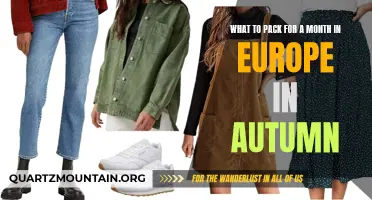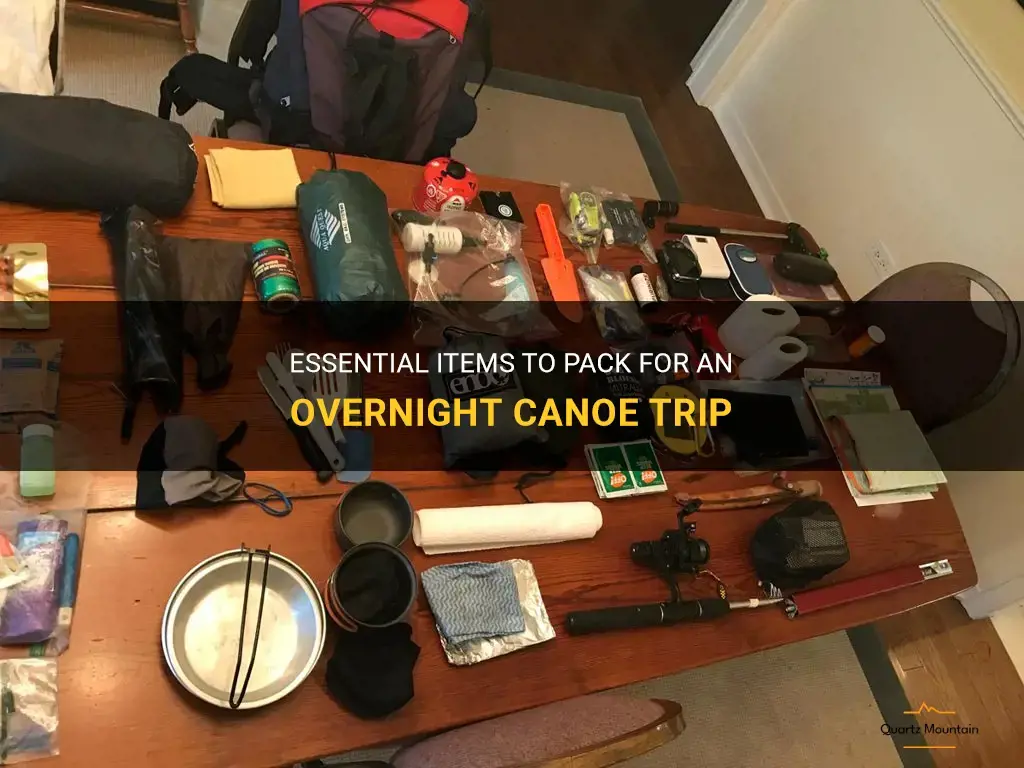
Are you preparing for an exhilarating overnight canoe trip? As the waters call your name and the adventure awaits, it's essential to be well-equipped for your journey. From practical essentials to creature comforts, packing the right items can make all the difference in ensuring a smooth and enjoyable experience in the great outdoors. In this article, we will explore the essential items you should pack for an overnight canoe trip, allowing you to be fully prepared for whatever comes your way. So grab your dry bags and let's dive into what you need for a successful and memorable canoe adventure!
What You'll Learn
- What essential items should I pack for an overnight canoe trip?
- Are there any specific clothing items that are recommended for a canoe trip?
- In terms of food and cooking supplies, what should I pack for an overnight canoe trip?
- Are there any safety or emergency supplies that I should include in my packing list for a canoe trip?
- What type of sleeping gear and shelter should I bring on an overnight canoe trip?

What essential items should I pack for an overnight canoe trip?
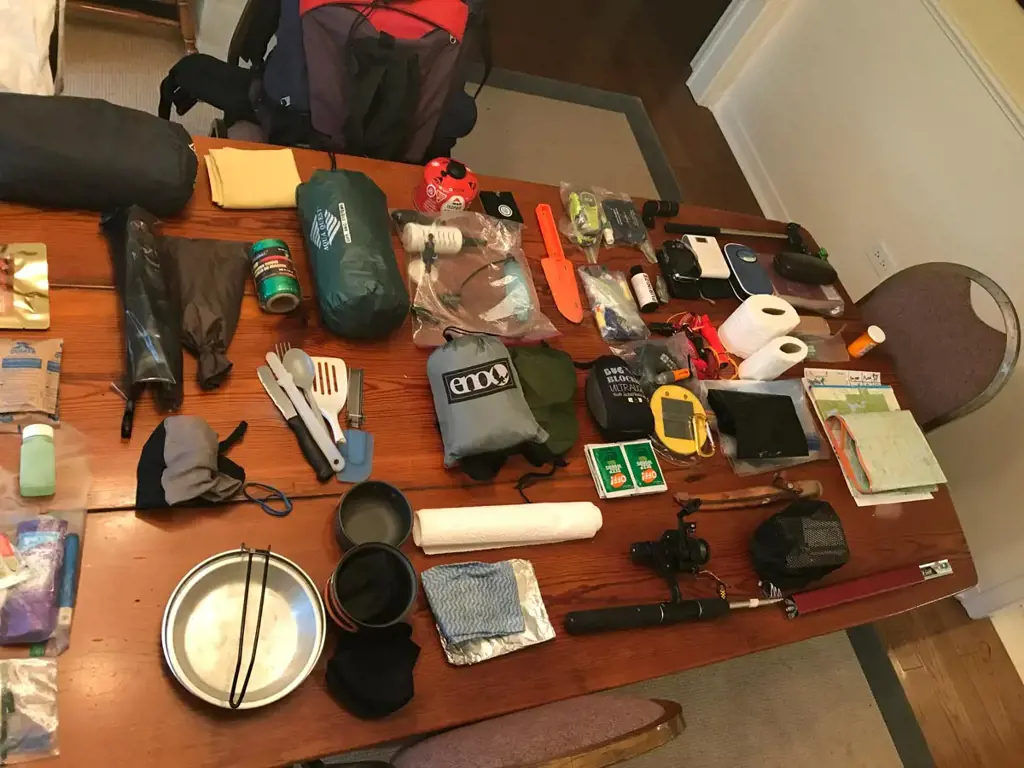
Are you planning an exciting overnight canoe trip? Making sure you have all the essential items packed is crucial for a successful and enjoyable adventure. From safety equipment to cooking supplies, here is a list of things you need to pack for an overnight canoe trip.
Canoe and Paddles:
The first and most obvious item you'll need is a canoe. Make sure it is in good condition, with no leaks or damaged parts. Additionally, pack the appropriate number of paddles for your group. It's always a good idea to bring a spare paddle in case one breaks or gets lost.
Safety Equipment:
Safety should be your top priority. Pack life jackets for everyone in your group and make sure they fit properly. A first aid kit is also essential in case of any injuries or emergencies. Include items like bandages, antiseptic wipes, pain relievers, and any necessary medications.
Navigation Tools:
Having the right navigation tools is crucial for staying on track during your trip. Pack a map of the area you'll be exploring, a compass, and a GPS device if you have one. Make sure you know how to use these tools effectively.
Camping Gear:
Since you'll be spending the night, you'll need some camping gear for a comfortable overnight stay. This includes a tent, sleeping bags, sleeping pads, and a camping stove. Consider the weather conditions and pack appropriate sleeping bags that will keep you warm during the night.
Food and Water:
Pack enough food for your entire trip, ensuring it is easy to prepare and lightweight. Granola bars, dehydrated meals, and trail mix are great options. Don't forget to bring a water filter or purification tablets to ensure a clean and safe drinking water supply.
Clothing and Personal Items:
Pack appropriate clothing for the weather conditions you expect to encounter. Dress in layers to be prepared for changing temperatures. It's also essential to pack sunscreen, insect repellent, a hat, sunglasses, and a waterproof bag for any electronics or important personal items.
Cooking Supplies:
If you plan on cooking your meals during the trip, make sure to pack the necessary cooking supplies. This includes pots, pans, utensils, a camping stove, fuel, and a lighter or matches. Don't forget to bring biodegradable soap for cleaning dishes and cooking utensils.
Personal Floatation Devices (PFDs):
In addition to the life jackets, it is recommended to have personal floatation devices for each member of your group. These can be helpful in case someone falls into the water or needs additional buoyancy during the trip.
Remember to pack all these items in waterproof bags or dry sacks to protect them from water damage. Prioritize safety and comfort when packing for your overnight canoe trip, and you'll be well-prepared for an unforgettable adventure.
Essential Items to Pack for Your Masai Mara Safari Adventure
You may want to see also

Are there any specific clothing items that are recommended for a canoe trip?
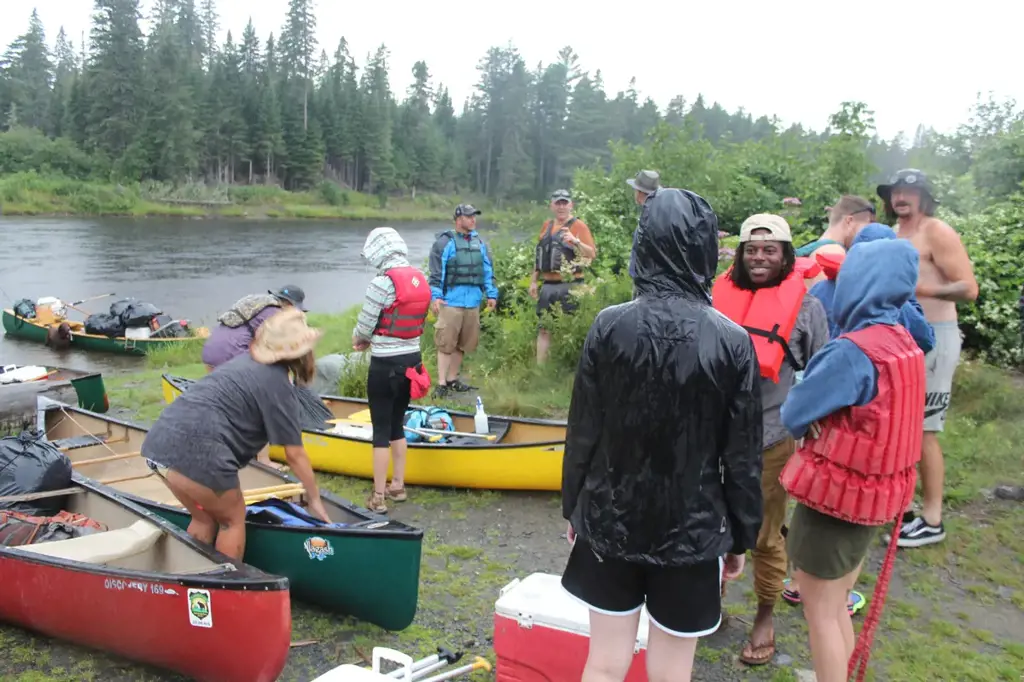
When embarking on a canoe trip, it is important to consider the appropriate clothing to wear in order to ensure comfort and safety throughout the journey. While there is no specific clothing item that is universally recommended for all canoe trips, there are certain considerations to keep in mind when selecting attire for your adventure.
- Breathable and Quick-drying Materials: Canoeing often involves exposure to water, whether it's from paddling, splashes, or unexpected bouts of rain. It is advisable to wear clothing made from breathable and quick-drying materials such as nylon or polyester. These fabrics allow moisture to evaporate quickly, keeping you dry and comfortable throughout the trip.
- Layering: Weather conditions can change quickly, especially when canoeing in areas with varying temperatures or climates. Dressing in layers allows you to adapt to changing temperatures, ensuring that you stay warm in colder conditions and can remove layers if you start to overheat. A good layering system typically consists of a base layer to wick moisture away from the skin, a mid-layer for insulation, and an outer layer for protection against wind and rain.
- Sun Protection: Canoe trips often involve spending extended periods of time outdoors, making sun protection essential. One should consider wearing long-sleeved shirts and pants, preferably made from lightweight and breathable materials. Additionally, a wide-brimmed hat and sunglasses help shield your face and eyes from the sun's harmful rays.
- Footwear: When selecting footwear for a canoe trip, it is important to prioritize comfort, grip, and protection. Water shoes or sandals with sturdy soles and straps that can be securely fastened are recommended. These types of footwear provide good traction on wet surfaces, protect your feet from rocks and other hazards, and allow water to drain easily.
- Waterproof Gear: In addition to proper clothing, it is crucial to have waterproof gear such as a rain jacket or poncho and dry bags to protect your belongings. These items will ensure that you and your gear stay dry in case of rain or water splashes.
- Personal Preferences and Local Conditions: While there are general guidelines for clothing on a canoe trip, personal preferences and local conditions should also be considered. Familiarize yourself with the specific climate, weather patterns, and expected water conditions of your destination. This will help inform your clothing choices and ensure that you are adequately prepared for the trip.
In summary, when preparing for a canoe trip, it is advisable to choose clothing made from breathable and quick-drying materials, dress in layers for comfort and adaptability, protect yourself from the sun with appropriate clothing and accessories, wear suitable footwear, and have waterproof gear on hand. By considering these factors and tailoring your clothing choices to your specific trip and personal preferences, you can ensure a comfortable and enjoyable canoeing experience.
The Essential Packing Guide for Boyscout Summer Camp
You may want to see also

In terms of food and cooking supplies, what should I pack for an overnight canoe trip?
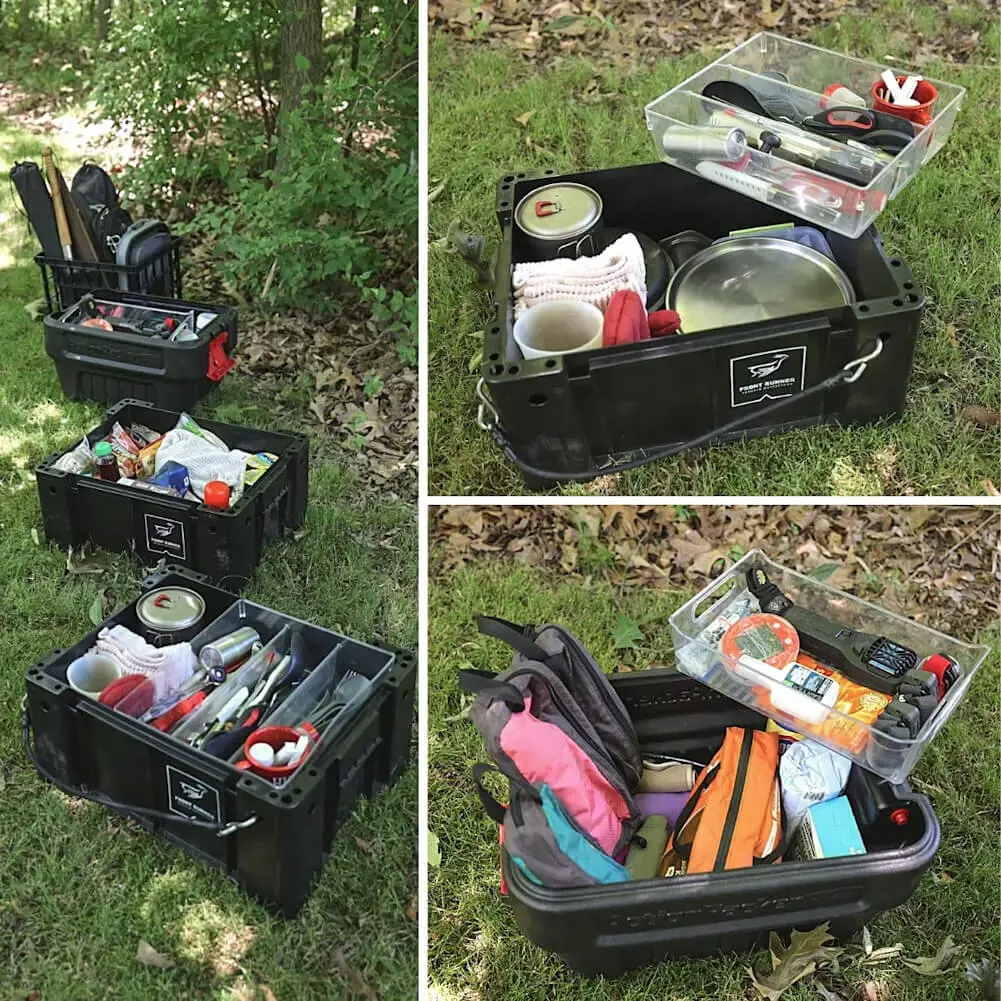
When planning for an overnight canoe trip, it's important to consider what food and cooking supplies you should pack to ensure a successful and enjoyable experience. The right choices will keep you fueled and satisfied during your adventure. Here are some essential items to include in your packing list:
- Lightweight and non-perishable food: Since you'll be carrying all your supplies in a canoe, it's crucial to select lightweight, easy-to-pack food options. Opt for items that don't require refrigeration or special preparation. Examples include dehydrated meals, energy bars, nuts, and dried fruits. These foods provide essential nutrients and can be easily packed in sealed bags or containers.
- Water: Staying hydrated is essential while paddling, so be sure to bring an adequate supply of water. Consider using a water filtration system or purifying tablets to treat water from natural sources such as rivers or lakes. This will allow you to refill your water bottles during the trip and reduce the weight of your load.
- Cooking equipment: To prepare your meals, you'll need some basic cooking equipment. A lightweight camp stove or portable camping grill is a great option for heating water or cooking simple meals. Don't forget to pack a small pot or pan, utensils, and a multi-purpose knife. These tools will enable you to cook a variety of meals while maximizing space and weight.
- Fuel: If you choose to use a camp stove, ensure you pack enough fuel for your trip. The amount needed will depend on the type of stove and the duration of your journey. Check the stove's specifications or consult with the manufacturer to determine the amount required. It's also advisable to bring an extra canister of fuel as a backup.
- Food storage containers: Keep your food safe and organized by using waterproof and airtight containers. This will protect your food from moisture, pests, and any potential spillage. Ziplock bags and lightweight Tupperware can be useful for storing items such as trail mix or leftovers. Remember to pack extra bags for disposing of any waste, ensuring you leave no trace behind.
- Condiments and spices: To add flavor to your meals, consider bringing small containers of your favorite condiments and spices. These can include salt, pepper, hot sauce, and seasoning mixes. Transporting them in small, lightweight containers will save space and prevent leaks or spills.
- Utensils and dishes: Don't forget to pack essential utensils such as spoons, forks, and knives. Opt for lightweight, durable options made of plastic or titanium. Additionally, bring a small plate or bowl, a cup, and a mug for serving and enjoying your meals. These items are essential for mealtime and can be easy to clean in nature.
- Meal planning and preparation: Before your trip, plan your meals and portion them accordingly. This will help you determine the quantity of food and supplies you need. Pre-measure ingredients and pack them in separate, labeled bags for easy access during meal preparation. Consider meals that can be prepared quickly with minimal cooking, such as pasta, rice dishes, or dehydrated soups. Keeping it simple will save time and energy while ensuring you're well-fed.
Remember to pack enough food for the duration of your trip, including additional servings for emergencies or unforeseen circumstances. By considering these food and cooking supply essentials, you'll be well-prepared to enjoy your overnight canoe trip and make lasting memories.
The Essential Packing List for a September Laugavegur Trek
You may want to see also

Are there any safety or emergency supplies that I should include in my packing list for a canoe trip?
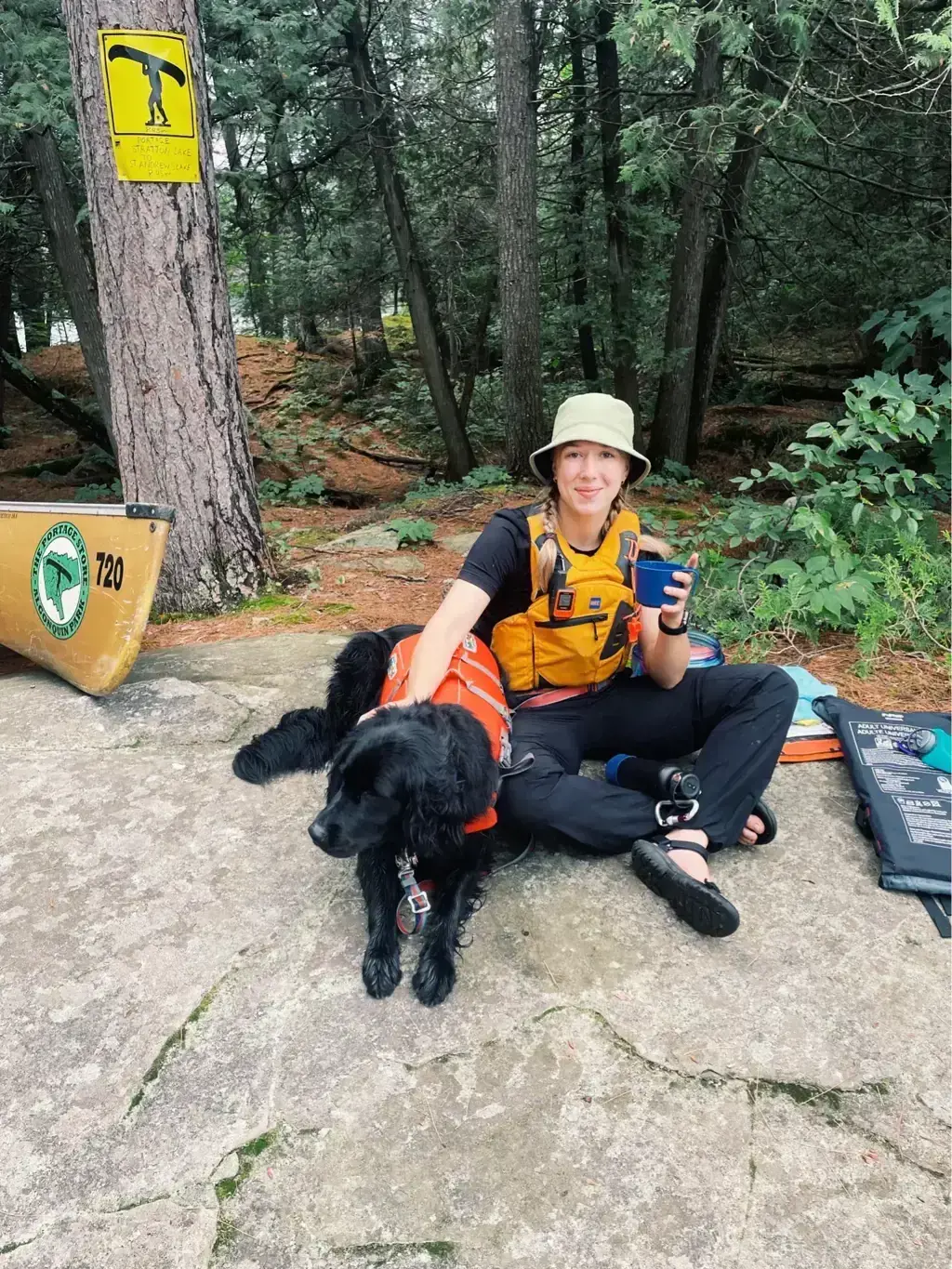
When planning for a canoe trip, it is crucial to prioritize safety and be prepared for any emergency situations that may arise. While packing your gear, it is important to include safety and emergency supplies to ensure your well-being throughout the journey. Here are some essential items you should consider including in your packing list:
- Personal Floatation Devices (PFDs): PFDs are an absolute necessity for any water-based adventure, including canoe trips. Make sure to pack enough PFDs for all members of your group, and ensure they are Coast Guard-approved and fit properly.
- Whistle or Air Horn: These small and lightweight items can be lifesaving in case of an emergency. They are excellent for attracting attention and signaling for help, especially if you are stranded or need to communicate in a noise-filled environment.
- First Aid Kit: Accidents can happen at any time, so it is crucial to carry a well-equipped first aid kit. Make sure it includes basic supplies such as bandages, antiseptic ointment, gauze pads, adhesive tape, tweezers, and pain relievers. Also, consider packing any personal medication that may be required for you or your group members.
- Fire Starter: Having a reliable fire starter is important for both warmth and signaling for help. Waterproof matches or a butane lighter are excellent choices. It is also advisable to include fire starters such as cotton balls soaked in petroleum jelly, which can burn even in wet conditions.
- Waterproof Map and Compass/GPS: Navigation is a crucial aspect of a canoe trip. Make sure to carry a waterproof map and a compass or GPS device to help you navigate your way through unfamiliar territories. Familiarize yourself with the use of these tools and know how to read a map before your trip.
- Tarp and Rope: A tarp can provide shelter from rain, wind, and other weather elements, while a sturdy rope can be useful for setting up a makeshift shelter, securing gear, or performing emergency repairs.
- Water Purification System: Clean drinking water is essential for your well-being during a canoe trip. A water filter or purifier will allow you to access safe drinking water from natural sources such as rivers or lakes. It is important to research the water sources along your route and be prepared to treat it accordingly.
- Emergency Food and Energy Bars: Packing some non-perishable emergency food items such as energy bars, nuts, or dried fruits will ensure you have a supply of vital nutrients in case you get stranded or experience an unexpected delay.
- Repair Kit: Carrying a basic repair kit for your canoe can help you address minor issues on the spot, avoiding potential disasters. Your kit should include items like duct tape, epoxy, zip ties, and a multitool.
- Communication Devices: Depending on the remoteness of your trip, consider carrying a waterproof and durable communication device, such as a satellite phone or a personal locator beacon (PLB). These devices can help you summon rescue services in case of a serious emergency.
Remember, safety should be your top concern while embarking on a canoe trip. Besides packing these essentials, it is vital to conduct thorough research, assess weather conditions, inform someone about your trip plans, and acquire necessary permits if required. By being well-prepared, you can enjoy your canoe trip with peace of mind and minimize the risks associated with outdoor adventures.
The Essential Packing Guide for a Fun-Filled Day at Knott's Berry Farm
You may want to see also

What type of sleeping gear and shelter should I bring on an overnight canoe trip?
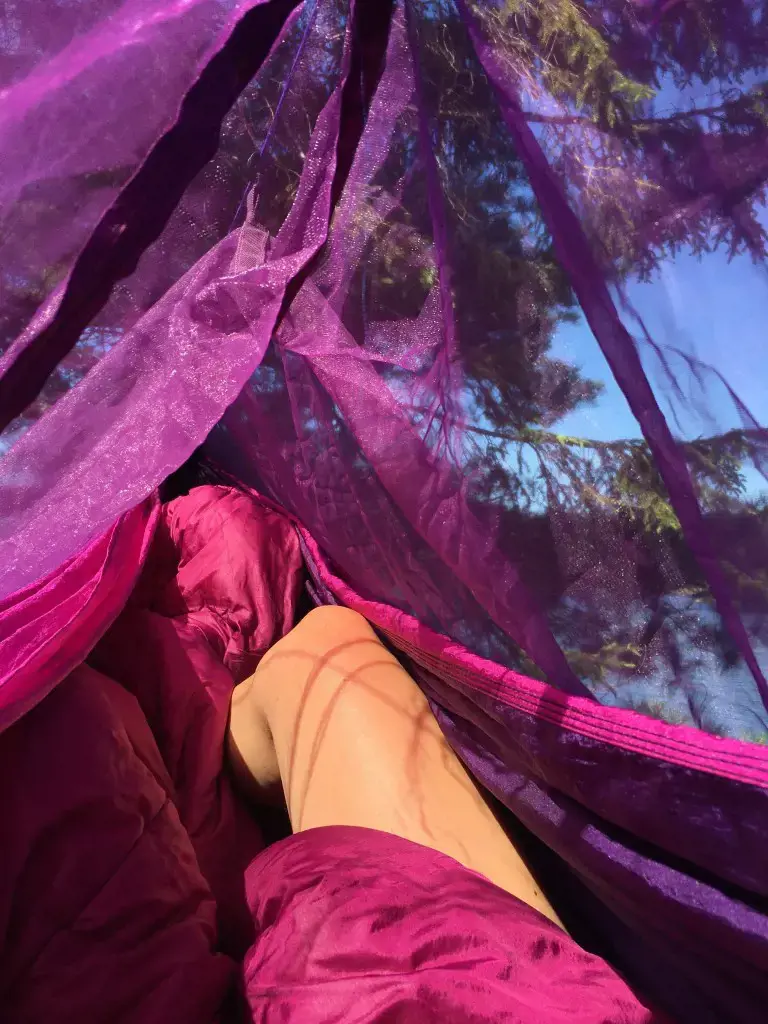
When embarking on an overnight canoe trip, it is essential to come prepared with the appropriate sleeping gear and shelter. Your choice of equipment will greatly impact your comfort and safety during your adventure. In this article, we will discuss the types of sleeping gear and shelter that you should consider bringing on your canoe trip, based on scientific research, practical experience, and step-by-step guidelines.
Sleeping Gear:
- Sleeping Bag: Choose a sleeping bag that is lightweight, compact, and suited for the climate of your destination. Look for a bag with a temperature rating appropriate for the expected nighttime temperatures. Down-filled bags are highly recommended due to their insulation properties and compressibility.
- Sleeping Pad: Invest in a high-quality sleeping pad to provide insulation and cushioning between your sleeping bag and the ground. Sleeping pads come in various thicknesses and materials, such as foam or inflatable. Opt for a pad that suits your desired level of comfort and portability.
- Pillow: While not a necessity, bringing a pillow can greatly enhance your sleeping experience. Consider lightweight inflatable options or compressible pillows to save space.
- Tent: A tent provides protection from the elements, bugs, and offers privacy. Look for a lightweight and easy-to-set-up tent that accommodates the number of people in your group. Consider factors such as ventilation, durability, and waterproof features when choosing a tent.
Shelter:
- Tarp or Hammock: For a minimalist camping experience, using a tarp or hammock can be a viable shelter option. Tarps provide overhead protection and can be easily pitched between trees or suspended using trekking poles. Hammocks are lightweight, comfortable, and keep you off the ground, but make sure to bring a bug net if bugs are a concern in your area.
- Bivy Sack: Bivy sacks are compact, lightweight, and provide a waterproof and windproof layer around your sleeping bag. They are ideal for solo travelers or those looking for a minimalist shelter option. Bivy sacks are quick to set up and offer protection from the elements.
- Shelter Systems: For longer canoe trips or trips with unpredictable weather, consider investing in a tent and shelter system specifically designed for canoe camping. These systems typically include a tent that attaches to your canoe, providing ample sleeping space and protection from the elements while still allowing easy access to the water.
When packing your sleeping gear and shelter, consider the weight, packability, and durability of each item. It is essential to strike a balance between comfort and practicality. Always check the weather forecast before your trip to ensure you are adequately prepared for the conditions you may encounter.
In conclusion, the type of sleeping gear and shelter you bring on your overnight canoe trip can greatly impact your comfort and safety. Choose a lightweight and compact sleeping bag, a quality sleeping pad, and consider bringing a pillow for added comfort. When it comes to shelter, options include tents, tarps, hammocks, bivy sacks, or specialized canoe camping systems. Be sure to consider the climate, duration of your trip, and individual preferences when making your selections. Happy canoe camping!
The Essential Packing List for a Four-Day Trip to Nashville
You may want to see also
Frequently asked questions
When packing for an overnight canoe trip, it's important to consider the essentials. You will need a tent or hammock for sleeping, as well as a sleeping bag and sleeping pad for added comfort. A cooking stove, cooking utensils, and a food cooler are necessary for meal preparation. Additionally, pack enough clothes for all weather conditions, including a rain jacket, extra layers, and a hat for sun protection.
The amount of food you should bring on an overnight canoe trip will depend on the number of people and the duration of the trip. It's best to plan for three meals a day, plus snacks, and pack non-perishable items that are easy to prepare. Choose options that are lightweight and high in nutrients to keep you energized throughout the trip. Don't forget to pack enough water or a water filtration system to stay hydrated.
Safety should always be a top priority when embarking on an overnight canoe trip. It is essential to bring proper safety gear, such as personal flotation devices (PFDs) for everyone on board. Other essential items include a first aid kit, a whistle or signaling device, a map and compass, and a fully charged cellphone or satellite communication device in case of emergencies. It is also wise to bring a waterproof bag to store valuable items and keep them dry.
In addition to the essentials and safety gear, it is important to pack personal items that will ensure comfort and convenience during the trip. Don't forget to bring toiletries, such as toothbrush and toothpaste, sunscreen, insect repellent, and any necessary medications. Other personal items may include a flashlight or headlamp, a multi-tool or pocket knife, a camera to capture memories, and extra batteries or a portable charger. Consider packing a dry bag to keep these items safe from water damage.
If you plan to camp overnight along the canoe route, there are a few additional items you may want to pack. These include a camping stove and fuel, a lightweight camping chair or stool, a small camp shovel for digging latrines or fire pits, and a tarp or groundsheet to provide extra protection for your tent. It may also be helpful to bring a portable camping shower or water container for washing up at the campsite. Additionally, be sure to check any regulations or restrictions regarding camping along the canoe route before your trip.





